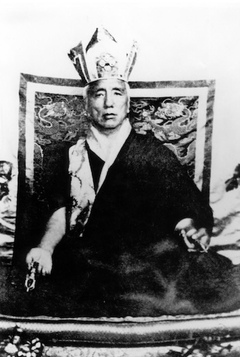Jamyang Khyentse Chökyi Lodrö Series
English (512) | Deutsch (46) | Español (31) | Français (85) | Português (10) | Italiano (3) | Nederlands (1) | 中文 (20) | བོད་ཡིག (511)
Texts by and about the renowned non-sectarian master Jamyang Khyentse Chökyi Lodrö ('jam dbyangs mkhyen brtse chos kyi blo gros, 1893–1959) of Dzongsar:
Advice
Amitābha
Arts & Crafts
Aspiration Prayers
Auspiciousness
Behavioural Guidelines
Biography
Buddhist Philosophy
Calling the Guru from Afar
Catalogues
Commentaries
Consecration
Dedicatory Colophon Verses
Descent of Blessings
Dharma Protectors
Dzogchen
Empowerment Rites
Fire Offering
Fulfilment
Gesar
Guru Rinpoche Prayers
Guru Yoga
History
Inscriptions
Letters
Lineage Prayers
Long-Life Prayers
Longevity
Mind Training
Notes
Offerings
Pilgrimage
Practice Guides
Praise
Offering the Flowers of Remembered Kindness: In Praise of the Gracious Teacher, Khen Rinpoche Kunpal
